A Series of Anti-Racism Lessons
For the past 11 weeks, I’ve taught a free virtual school for any child that wanted to join. Now for our last week of class, we’re going to work on anti-racist education, starting small and introducing some big topics that I hope lead to curious and challenging family conversations.
I believe strongly that it’s my privileged white self’s responsibility to continue to work on being a compassionate and active ally. This week, I invite you to join in this work. Below I will post the resources and activities I’ve chosen to study: family heritage, biases, what racism is, what Black Lives Matter means, and what it means to be an ally. I’ll add to it as the week progresses.
You are of course welcome to join us live on our daily zoom call at Little Peach House School or I invite you to do these lessons on your own time. I have years of experience as an educator as well as years of research as a human to be anti-racist but I know I have a lot of work to do. This is my best effort and is the beginning and extension of conversations with my own children and also a conversation with you. I welcome any feedback, suggestions, or resources. The comments are turned on and you can always email me (hello@aneladeisler.com).
LESSON 1: IDENTITY
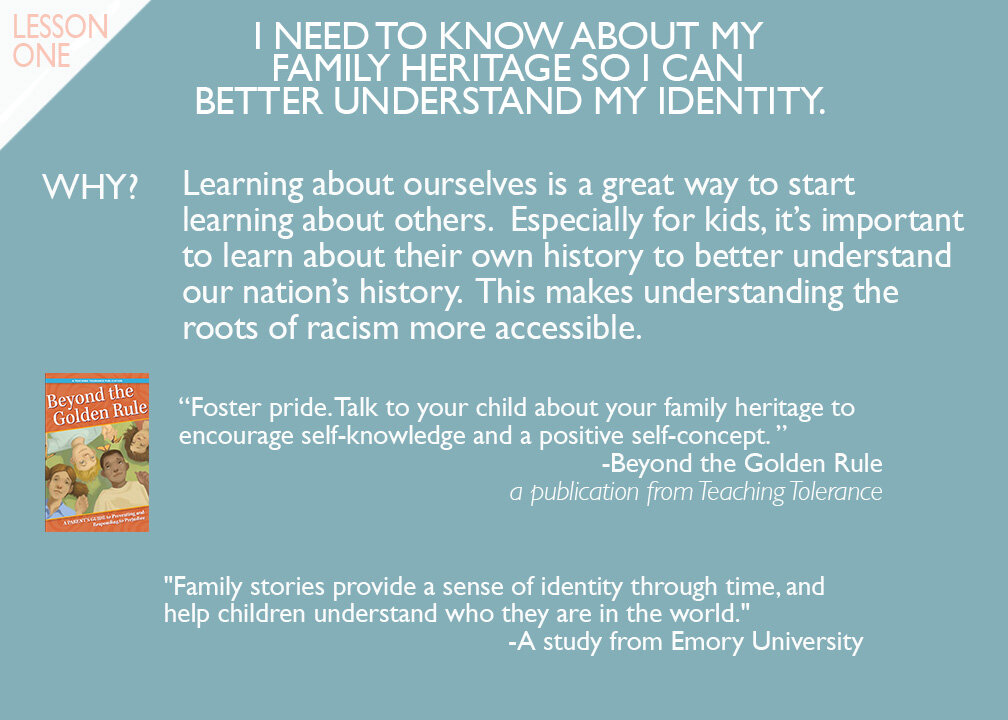

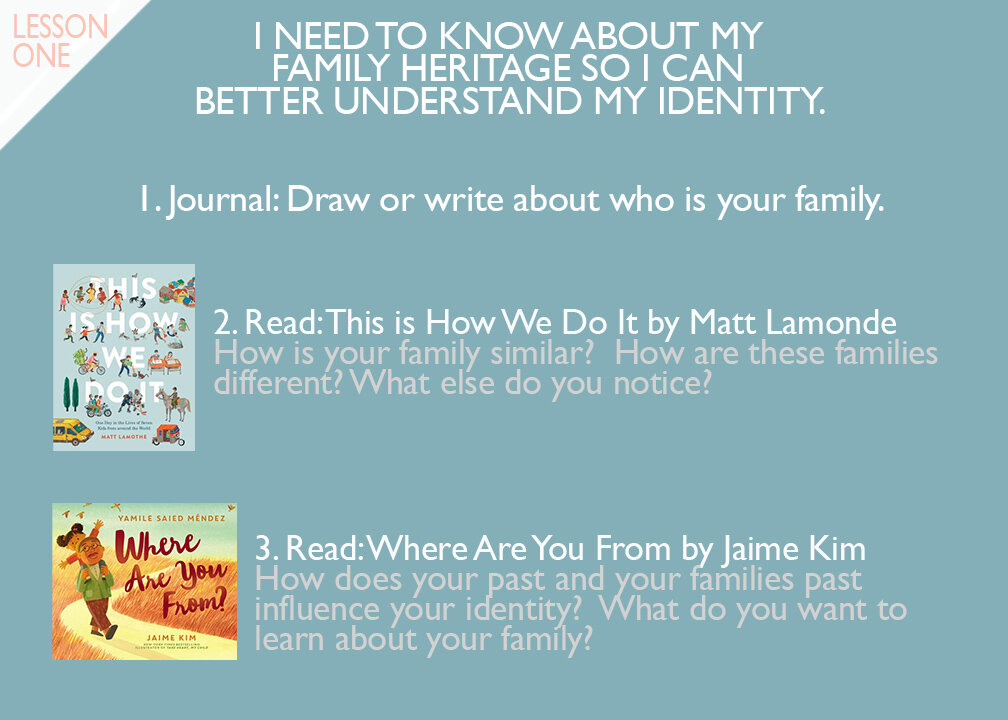
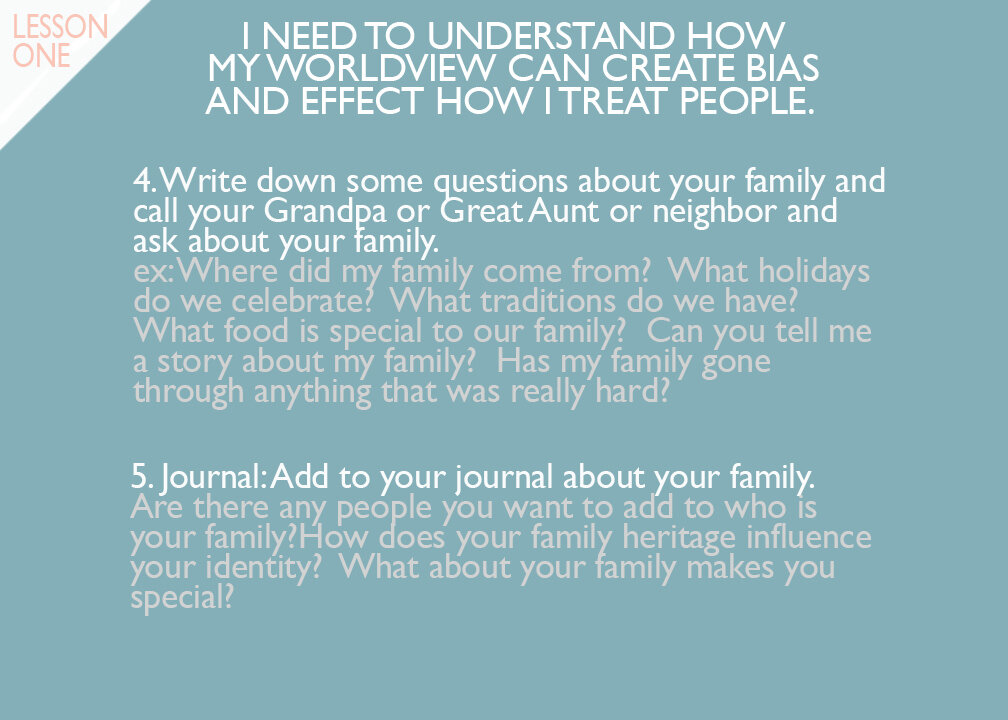
Slide 1: Why
Here’s a link to Beyond the Golden Rule and here is the study from Emory University.
Slide 2: Definitions
It turns out defining words is really tricky, and we’re not even into day 2 or 3 where I need to explain what bias and racism means to these young humans. I recommend taking up part of your dinner conversation this evening discussing what these words mean. My daughter initially defined family as “a mom and dad that live with two kids.” Yes, that is the make-up of her family, but I have some work to do, as we need to understand, celebrate and acknowledge that families come in so many different arrangements.
When looking up definitions to help create mine, I looked for websites that came from a psychology or counseling source as well as ones from ones from anti-racist organizations like this.
Slide 3: Journal + Read
Here’s the link to Matt Lamothe’s Book This is How We Do It.
And here is a link to listen to Ms. King read Where Are You From by Yamile Saied Mendez.
Slide 4: Research
My kids had a conversation with my parents and it ended up centering on food…food that they don’t eat like Polish sorrel soup and fresh caught Hawaiian fish at a beach bbq. My parents lit up when they got to talk about their families. It’s important to think about how our families influence our identities so we can then learn about other families and other people’s identities. I’d love to know how this went for you.
LESSON 2: BIAS
Before we dive in…the identity lesson and this bias lesson are what I found to be important building blocks to discuss before we dive into the big topics of white privilege, racism, allies, and activism that will come in the next lessons.
Also, after posting about the identity lessons, I had a few discussions about adoption. I wanted to acknowledge that exploring our family heritage is absolutely complex, especially for adopted people or people who don’t have access to their family heritage. I wish I had considered this when I first taught that lesson and welcome any resources or advice that you have from your experiences.
And now, I hope you start with a journal out or give some time to discuss this next prompt…
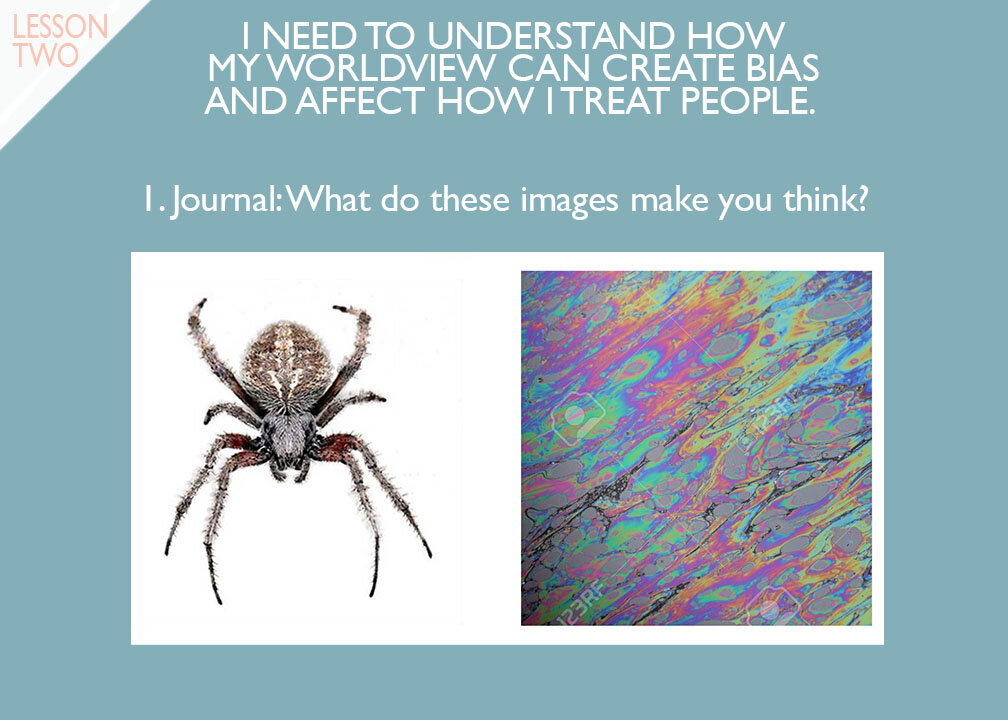
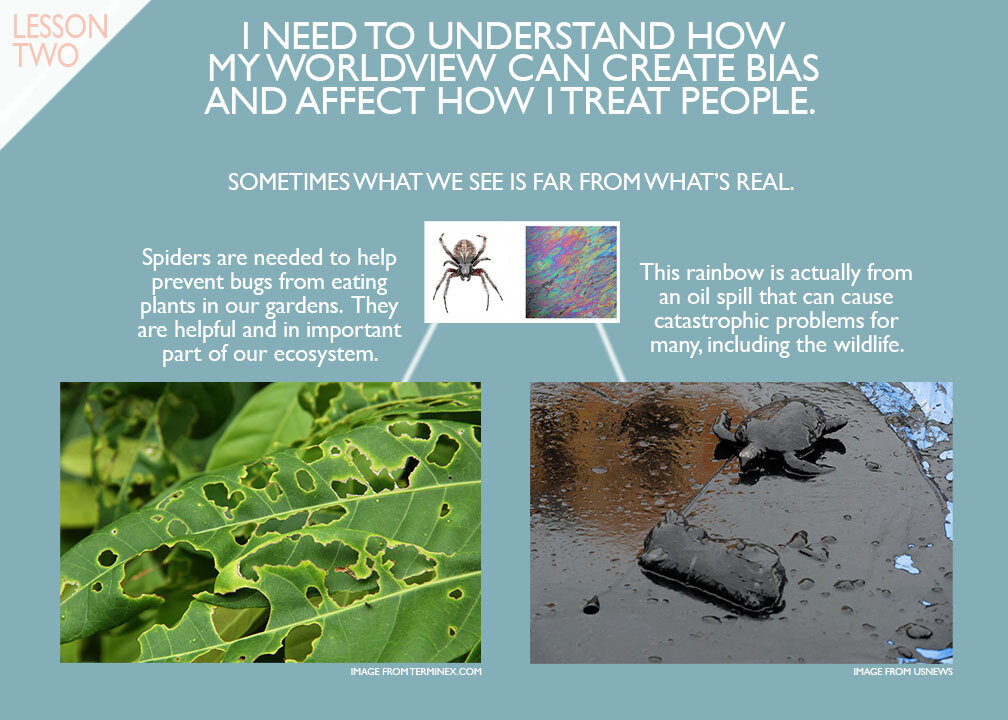
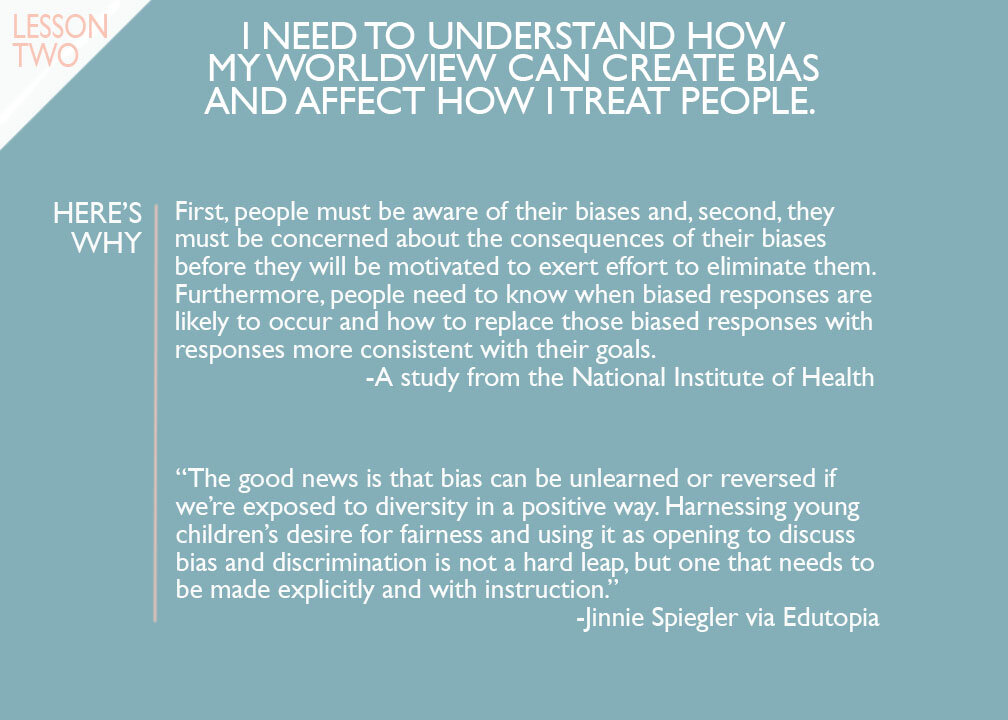
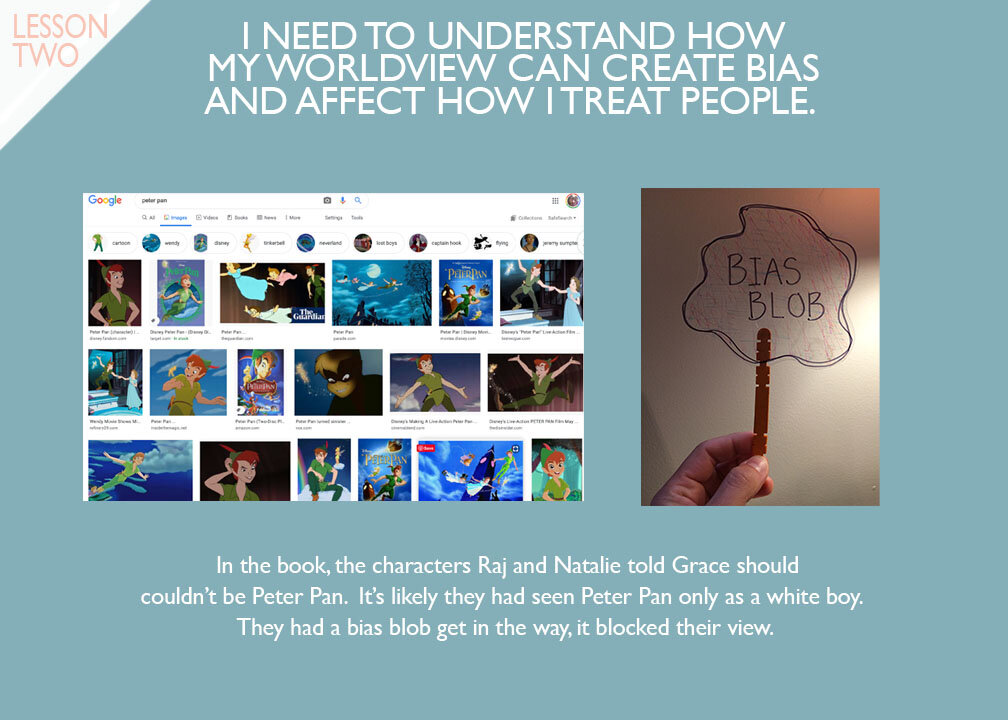

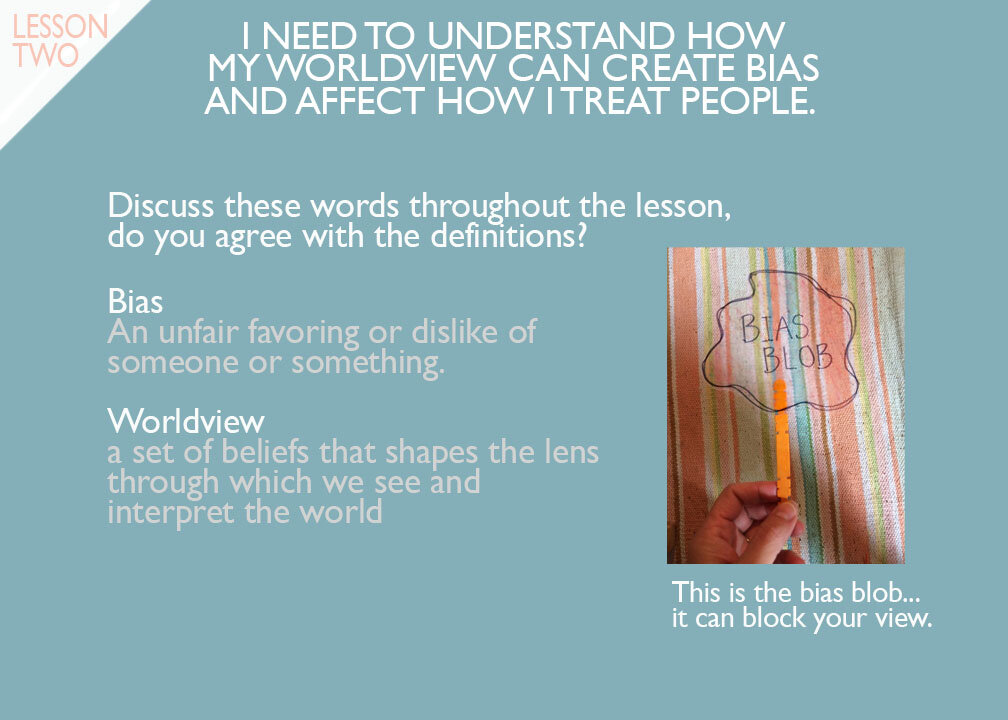
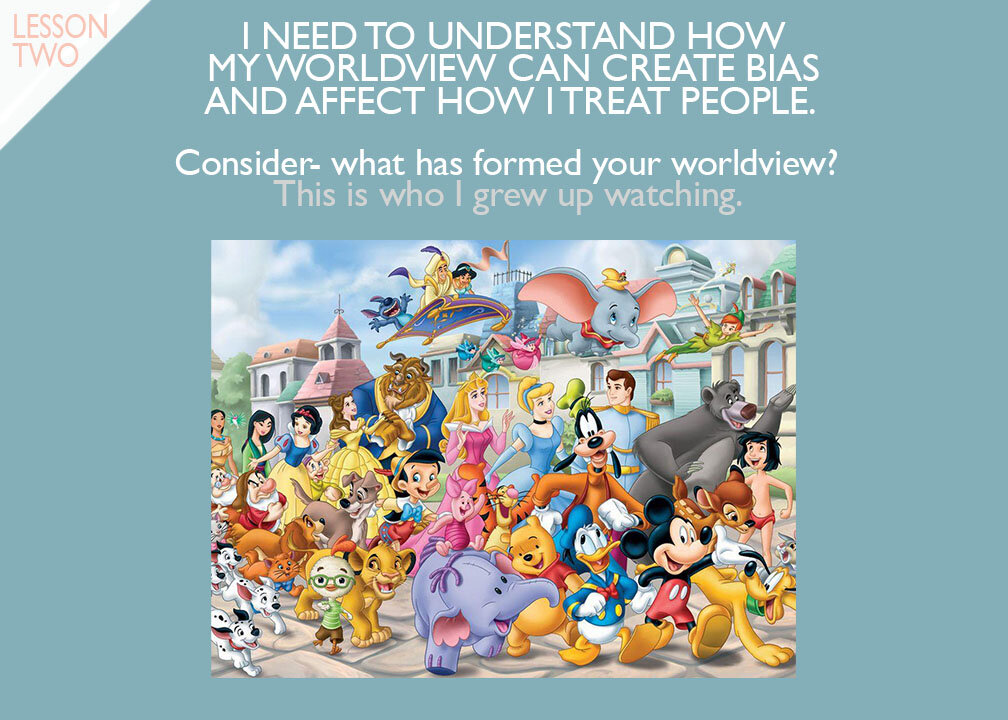
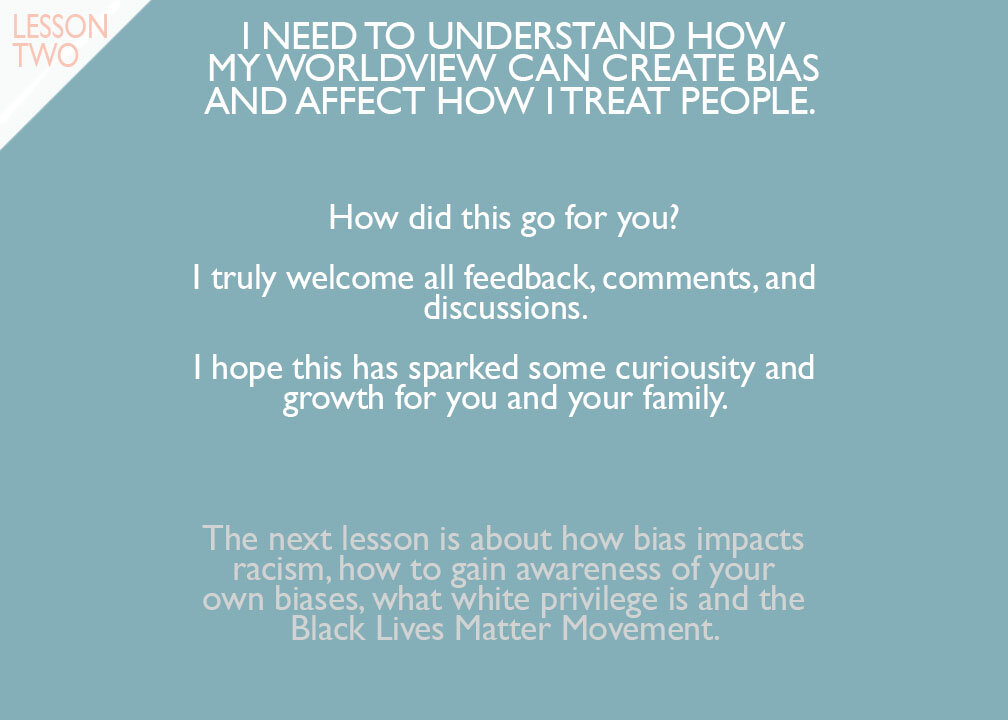
Slide 1+2 Journal Comments
Yes, some people love spiders and some wouldn’t be drawn to the rainbows, but I hope this illustrates my point that we have initial reactions to what we see and sometimes there’s just so much more to the story.
Slide 4 + 6 Bias
The kids really took to the “bias blob” that I made. It was a piece of shrinky dink paper taped onto a popsicle stick and as we read we looked through it to search for biases. These prompts are left vague so you could also read other books to further your discussions.
Slide 5 Book Links
Click here to go to a thoughtfully made virtual library of books including Amazing Grace by Mary Hoffman.
For further growth:
There are a lot of tests to examine your own bias here: https://implicit.harvard.edu/implicit/ Part of the tests use words/images and word association to find how quickly you connect their meaning.
This is a full curriculum from the Toronto Area Community Board about prejudice, bias and discrimination- the toolkits 3, 4, and 5 have many activities and resources for further work.
This article (cited on the why slide): Long-term reduction in implicit race bias: A prejudice habit-breaking intervention
Please share any other resources you’ve found helpful.
LESSON 3: RACISM
Confronting racism, what it means, how it’s been intertwined with my life and how it will be intertwined with my kids’ lives is extremely complicated and difficult to face. And I’m white. I acknowledge that in most ways I get to control how my kids face racism, injustices, their privilege. This isn’t the case for our black friends.
So here I am trying my best to share how I’m sharing this with my kids. To give you and your family a little guidance based on my research and experiences. Please acknowledge with me that my white experience impacts how I wrote these lessons. It’s so critical that we listen to black people and learn from them and also, it’s our job to do this work. Our job to use our privilege to help make these shifts. My job. I have work to do and I hope that you join me as none of us are stronger alone.
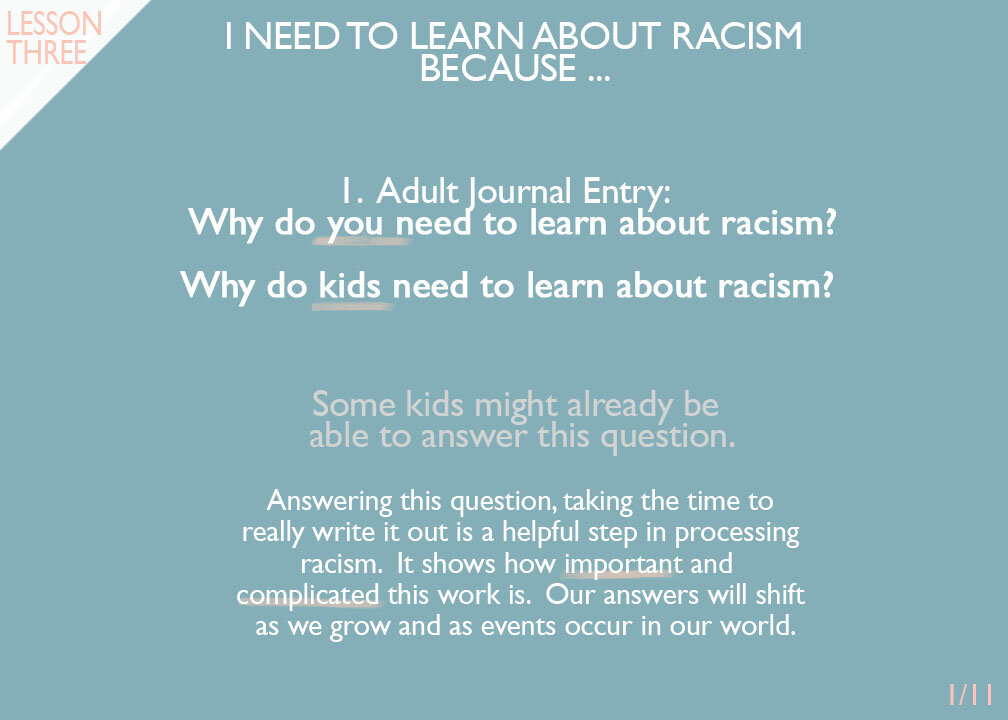
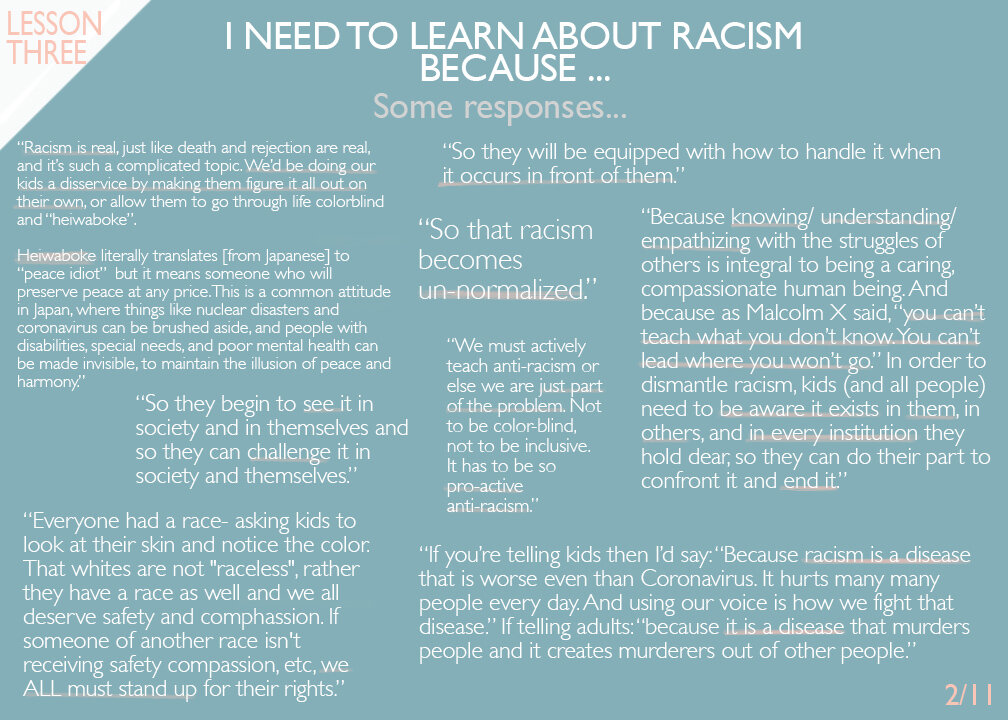
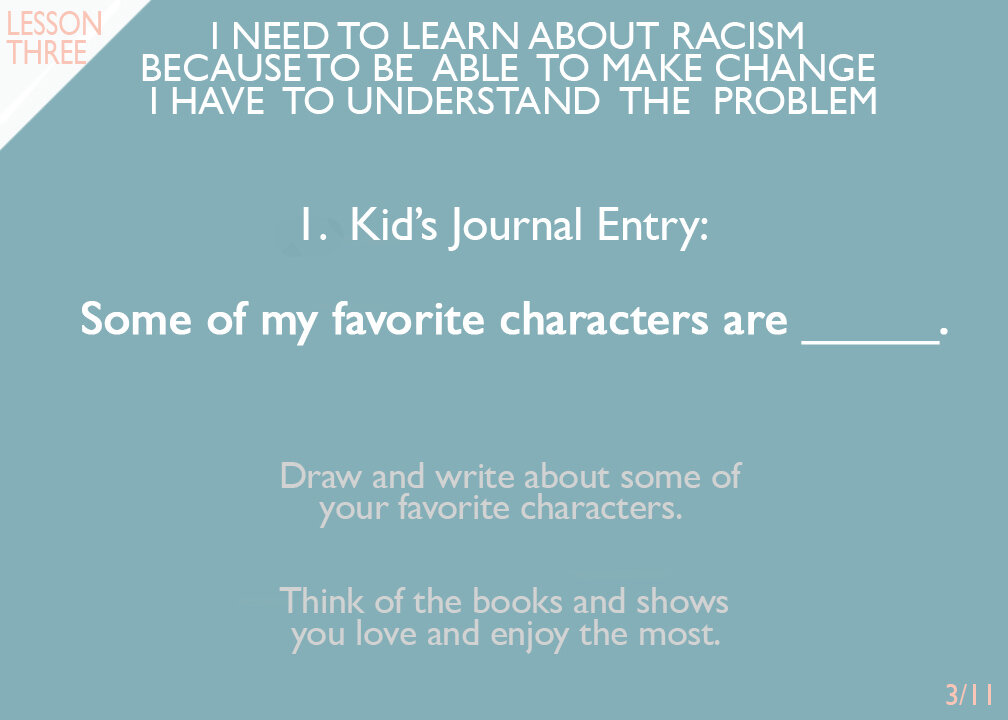

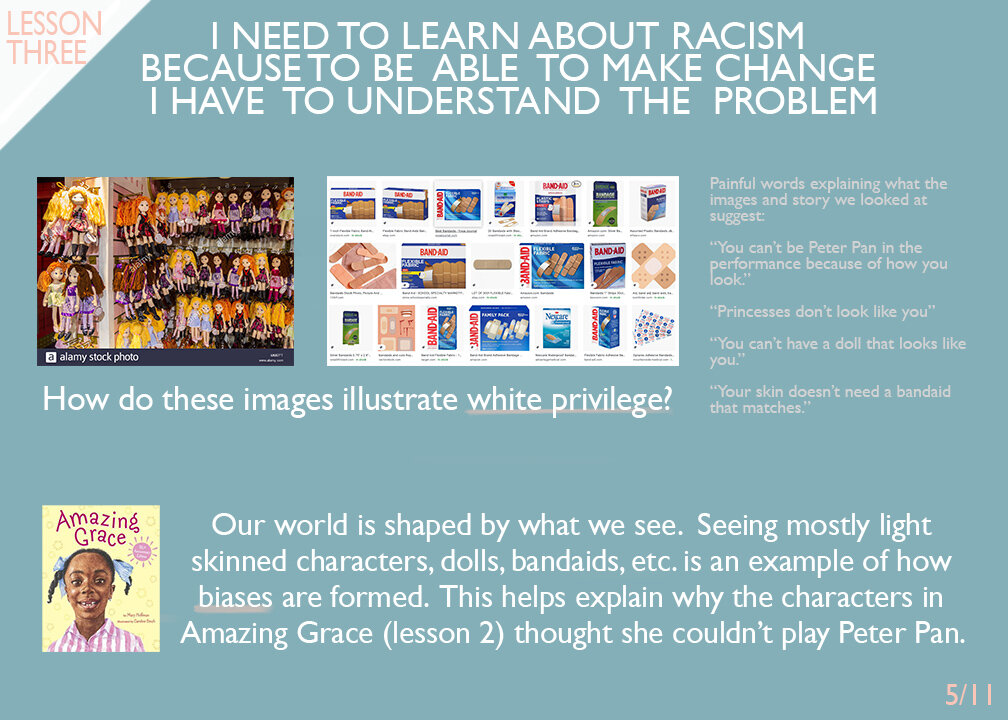

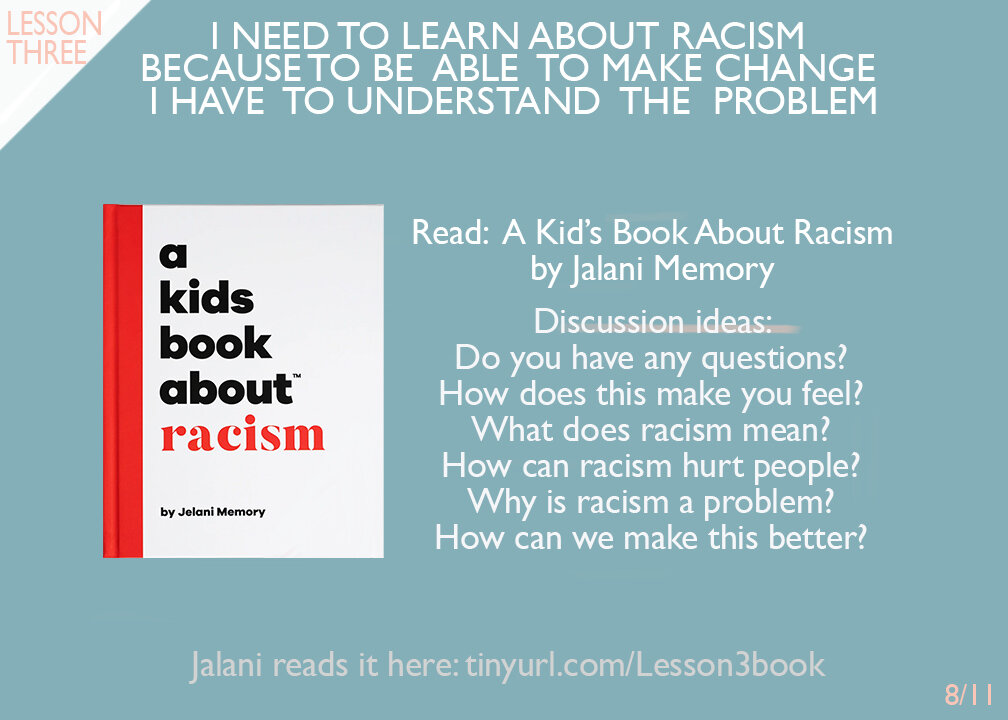
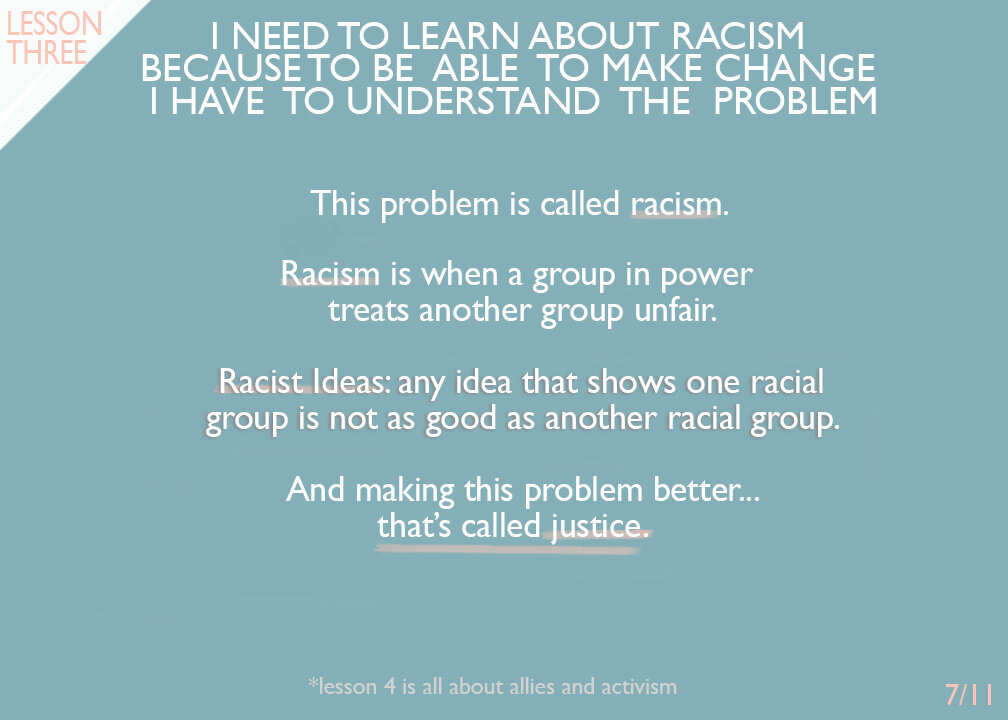
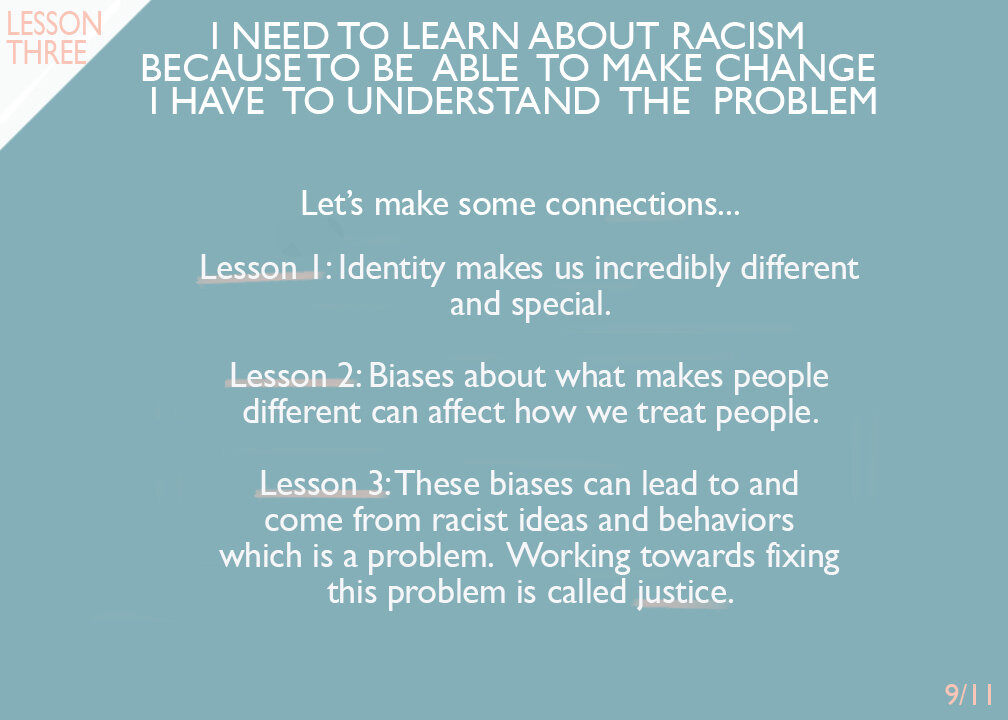
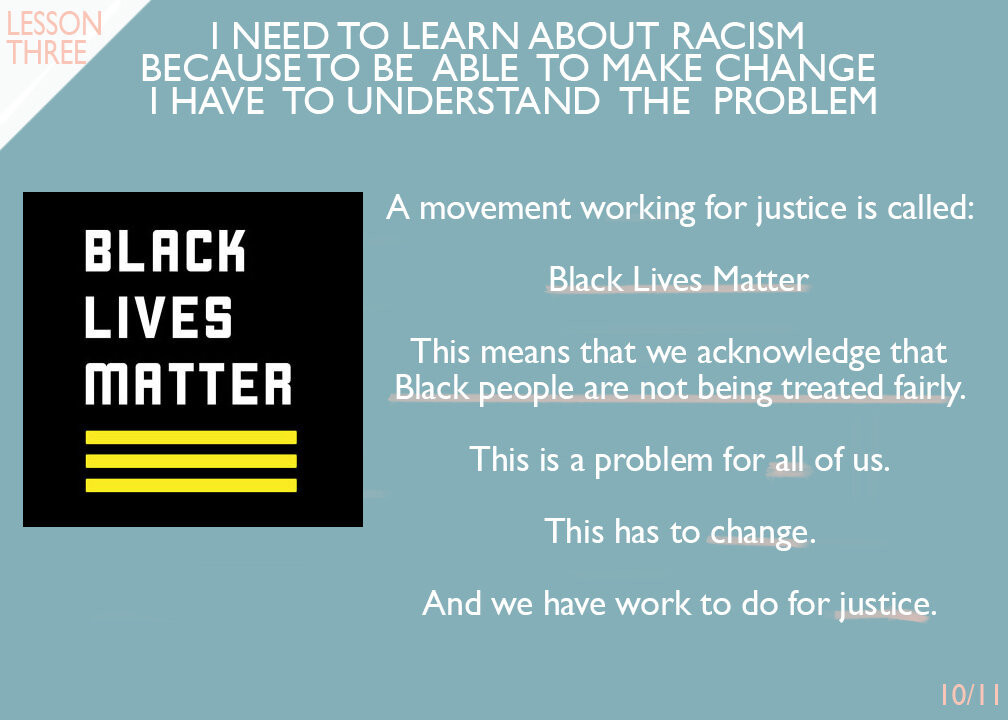
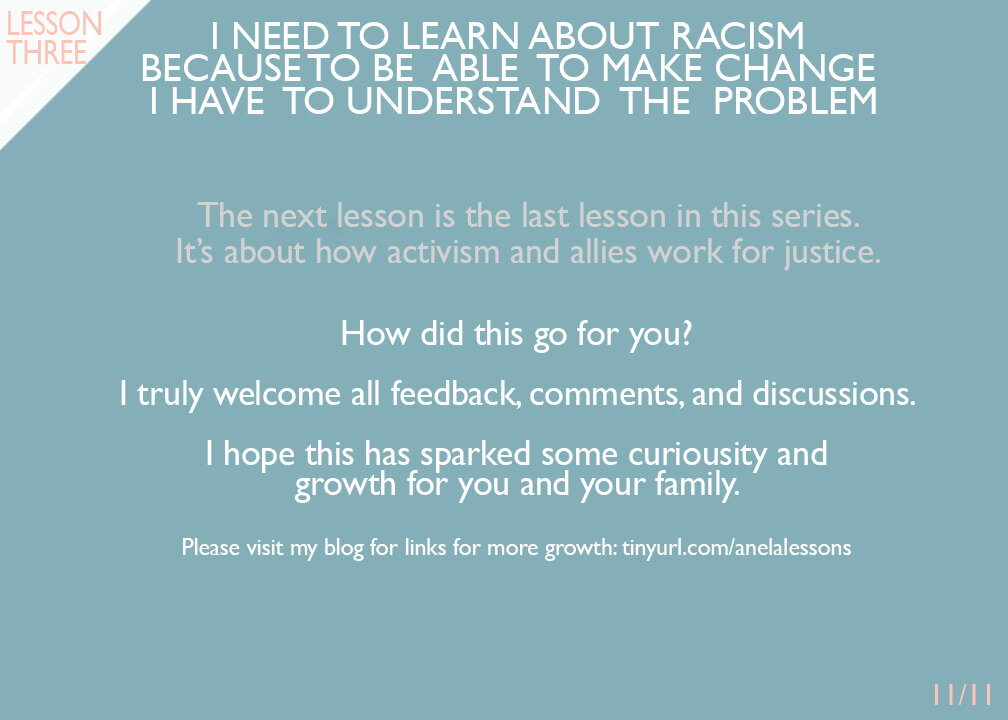
Slide 2: Links
Here are a couple links shared along with responses seen above: A chart about inclusion vs. anti-racism and a chart showing how kids experience race starting at 3 months of age.
Slide 5 Book + Bandaids
Here is a link to a Black Lives Matters Virtual Library including a read aloud of Amazing Grace.
Also, good news, Bandaid is now working towards diversifying skin color options, also black owned companies have been making them: Trucolour and Browndages, however easily accessing these is still a problem.
Slide 6 Comment
As I wrote this slide I just sat at the computer and cried. It’s painful to try to explain to my young kids the complexity of these terrible injustices that are so deeply rooted in our systems. This is a reason many privileged people don’t feel responsible and don’t act. However it’s the reason privileged white people need to acknowledge the power we are given and use it to work for justice.
Slide 8 Book Link:
Here’s the link to listen to Jalani Memory read his book which you can purchase here.
Slide 10: Link + capital B
Here’s the Black Lives Matters website. Here’s an explanation of why the Associated Press capitalizes the B in Black.
Ideas for taking this further:
Analyze your own library using this Guide for Selecting Anti-Bias Children’s Books. You could have the kids analyze their library, you may be surprised at how perceptive they are. When reading books that tell stories of racism and injustices, I have started to pause and give a little extra space for my kids to offer comments or ask questions. It’s led to some important and yes, difficult conversations.
Here’s an article from the Washington Post discussing How Silence Can Breed Prejudice
Writing out definitions when explaining these complex terms is very helpful. Here’s a glossary from Racial Equity Tools that helped me. I also google “define ____ for kids” to help find ways to describe words that will help my kids understand. Kinda ridiculous maybe but helpful for me.
And here’s a Resource Roundup I plan to work my way through.
LESSON 4: ALLIES
Here is the final lesson in this series on antiracism. Creating this series has been a step I’m taking to be a better ally and to help my kids be better allies. I hope so much that this has been helpful for some families. This work is so complicated and emotional. Please reach out to me or someone you trust as you learn and grow. I have listed a few extra action steps, trying my best to site works from BIPOC (Black Indigenous People of Color) and I welcome you to comment with a resource you have found helpful. Let’s grow together and work for justice together.

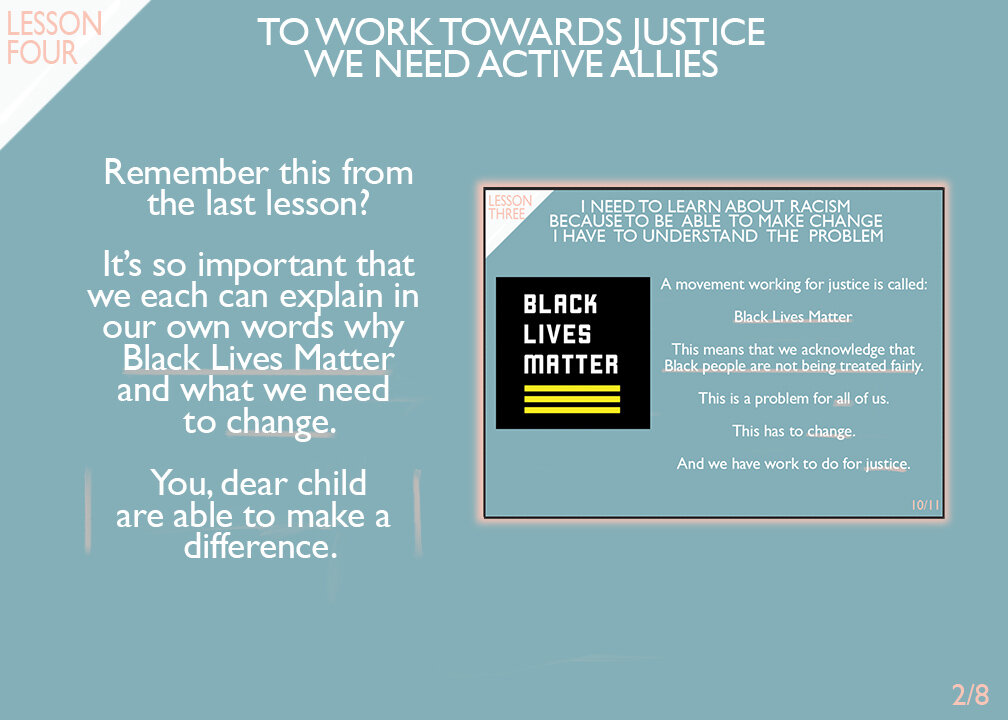
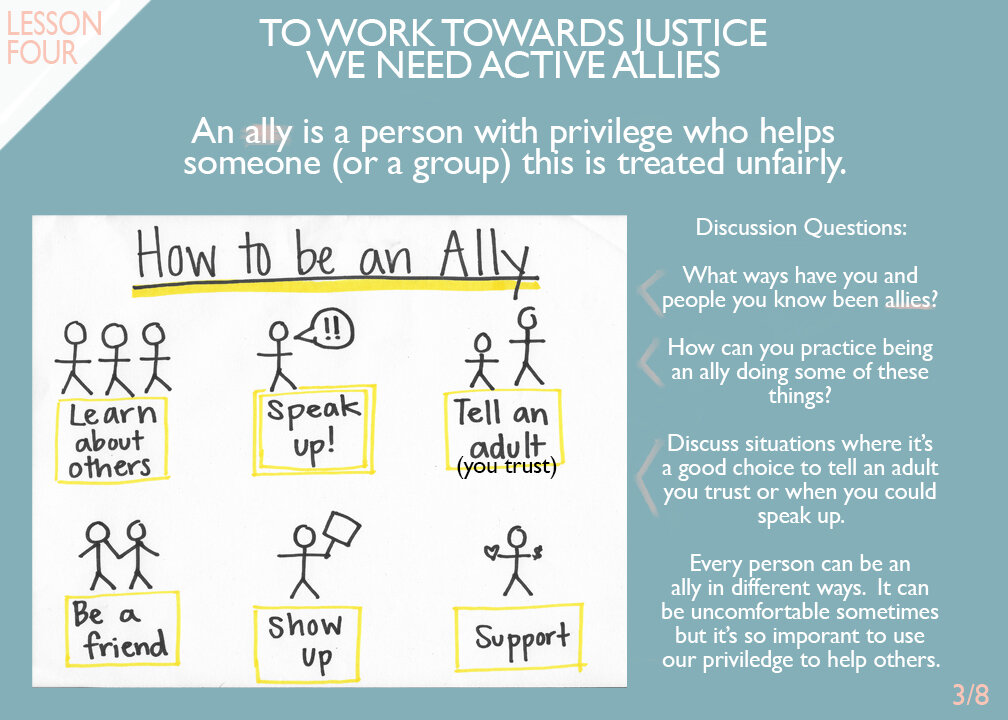
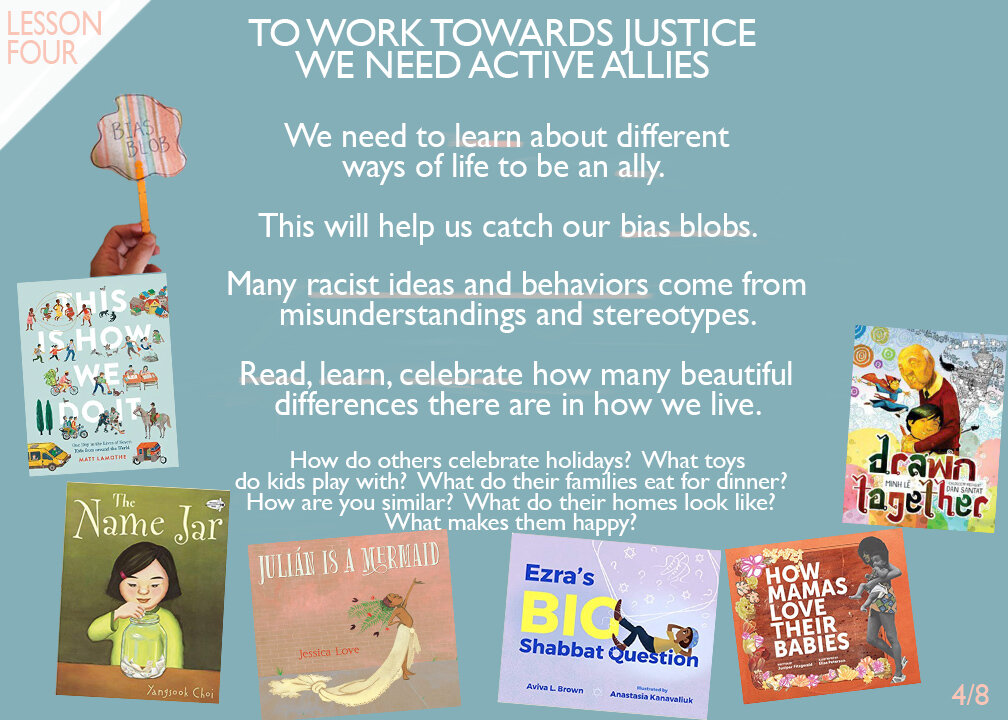
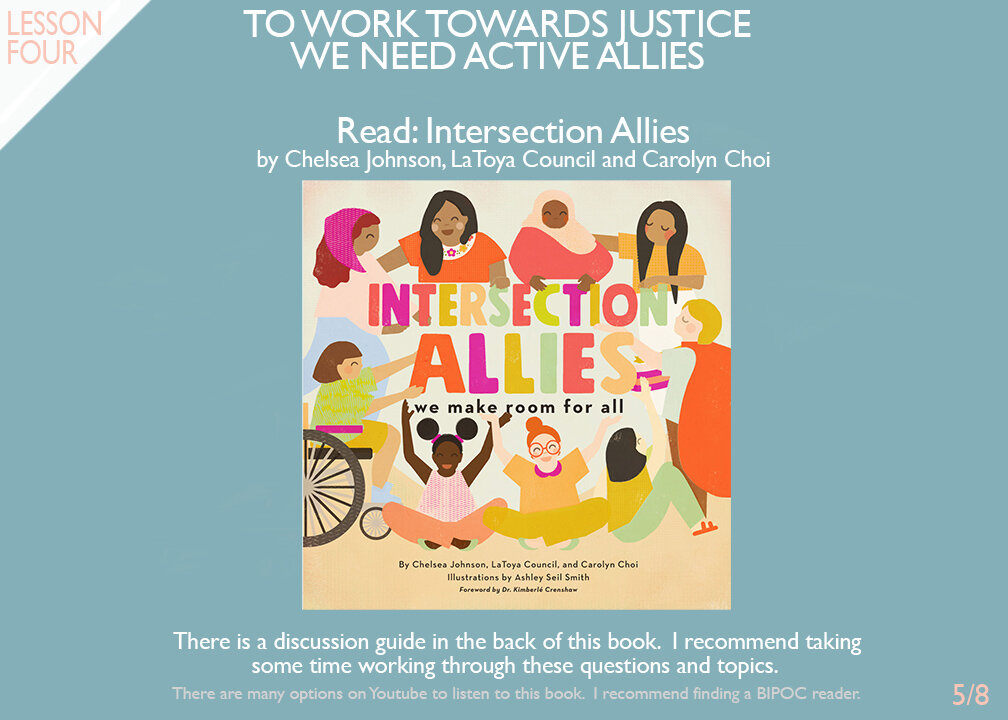
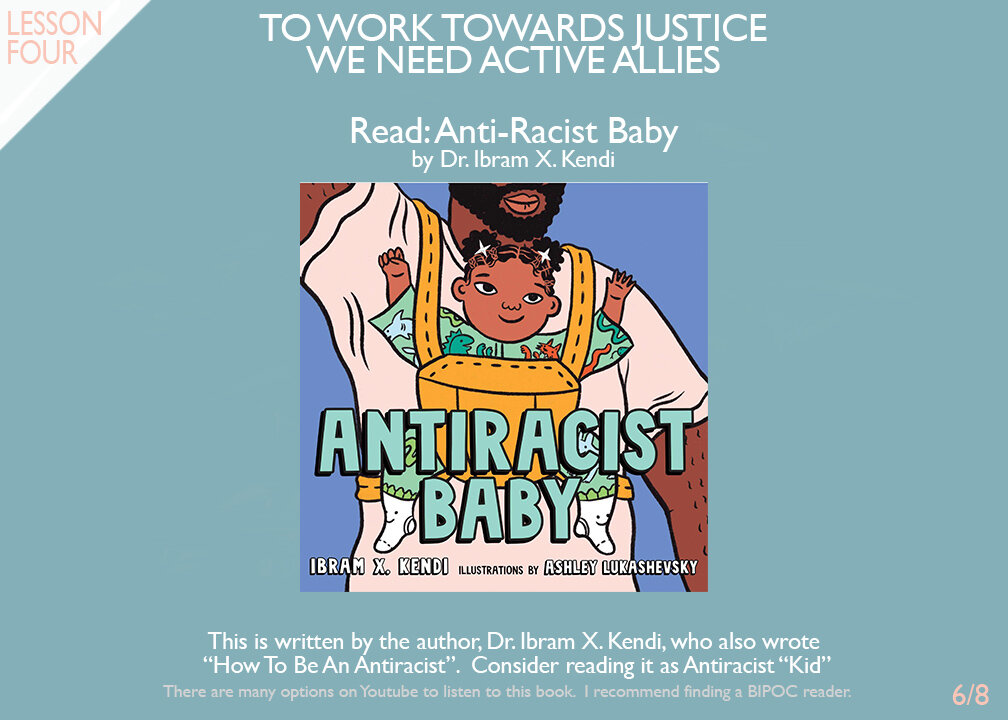


Slide 1 Link
Here’s the link to Black Lives Matter’s website. Here’s a 5 minute video of Elmo’s dad explaining BLM.
Slide 4 Book Ideas
The Conscious Kid has two book lists I recommend. Here’s a list from Book Riot of “30 Children’s Books About Diversity That Celebrate Our Differences”. Here’s a list from a public school district that has recommended age ranges and short descriptions. And here’s a Guide to Selecting AntiBias Childrens’ books.
Slide 5 and 6 Book Links
Intersection Allies website (on backorder but currently has a free PDF download) and read aloud.
AntiRacist Baby website, read-aloud, and an interview with the author and illustrator.
Well, there it is. Four lessons to help us talk to our kids about racism and to help raise them to be anti-racist. Not colorblind, not even inclusive, but problem acknowledging and problem changing members of society. I have learned a lot and learned a lot about how much I still need to learn while making these lessons. And now it’s time for me to stop creating lessons and take a step back to learn some more. I hope so much this has been helpful.
I welcome any comments, feedback, questions, recommended resources, and also welcome a phone call or distance visit if you want to talk more about this.
With hope and positivity,
Anela

